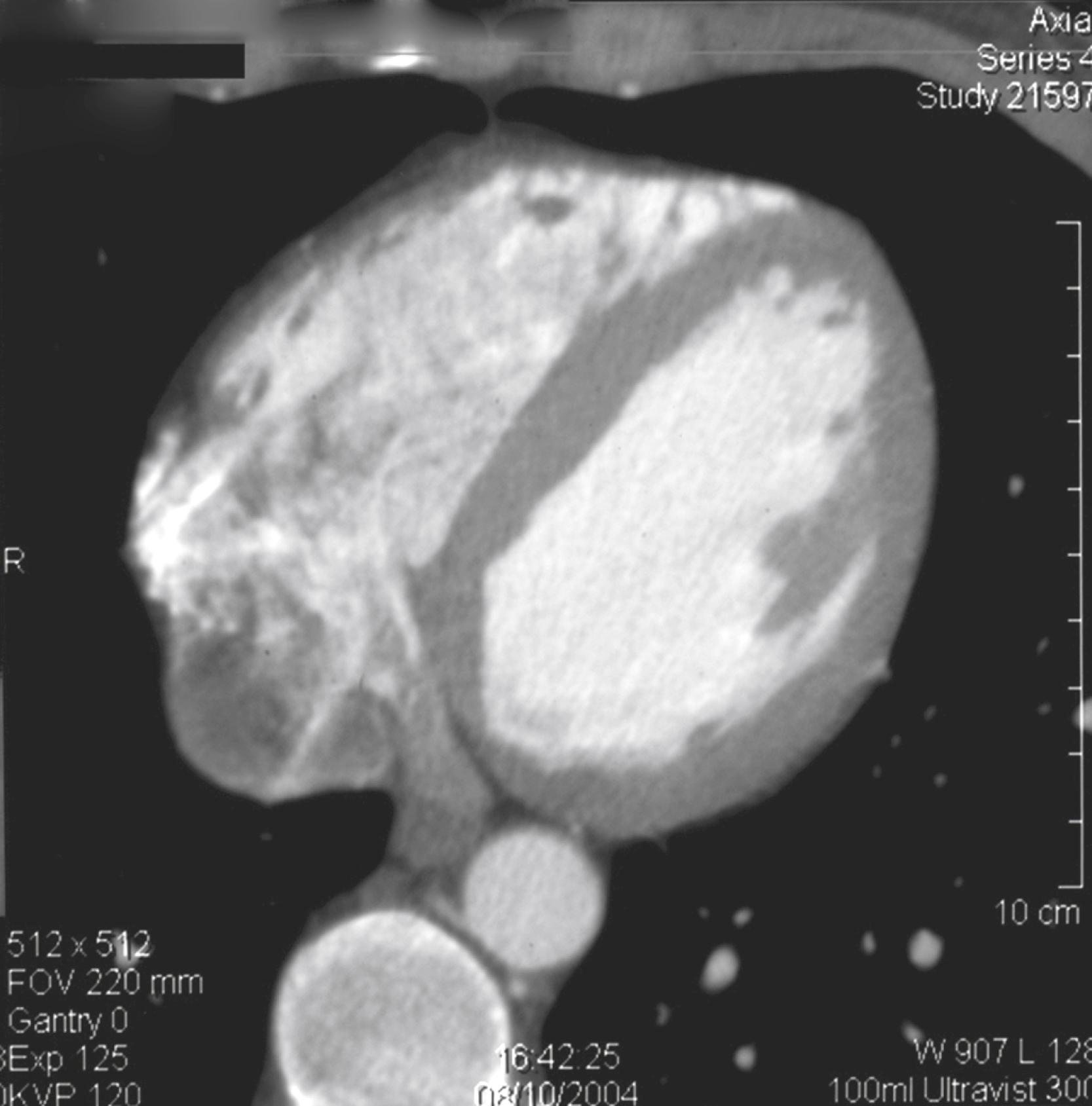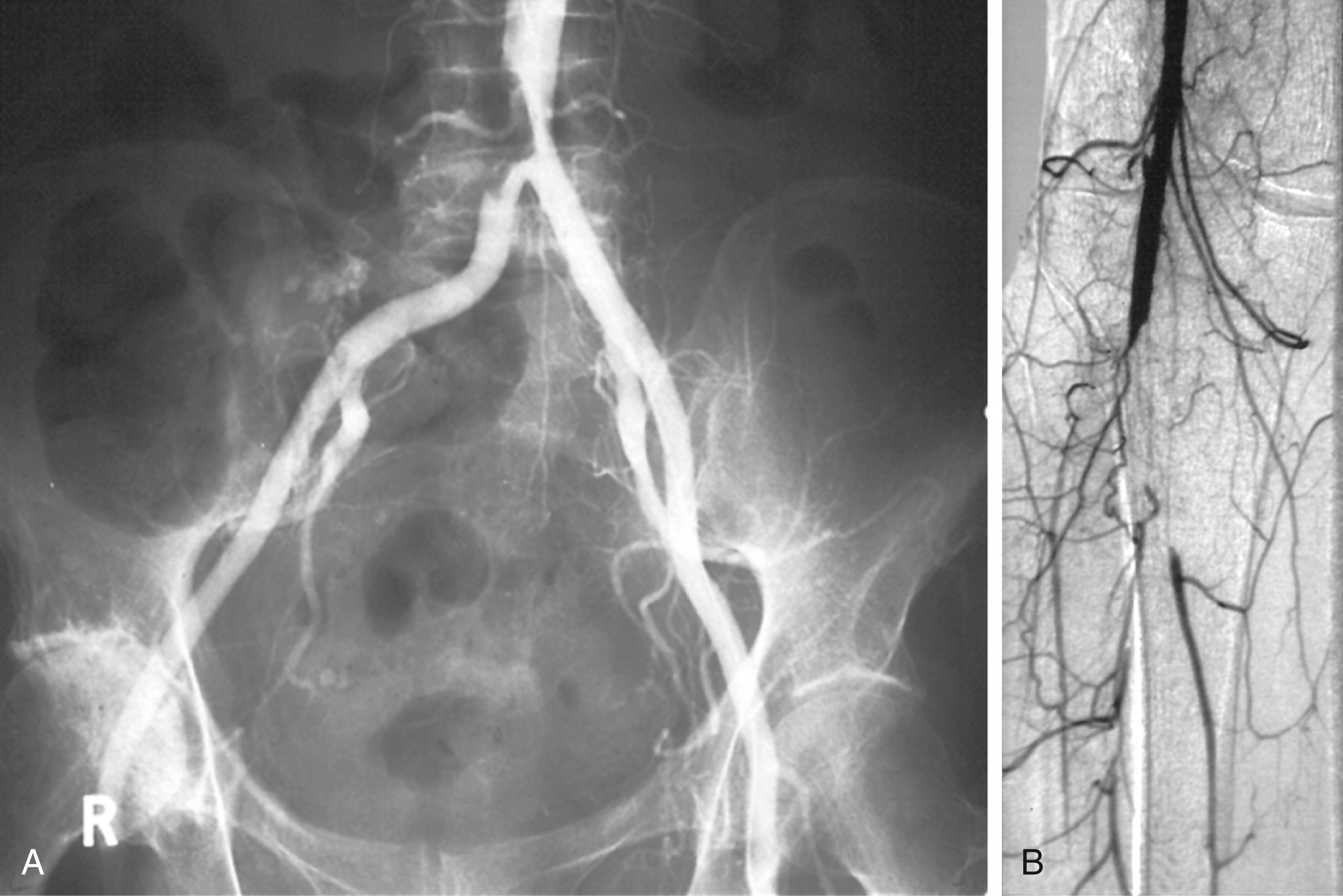Physical Address
304 North Cardinal St.
Dorchester Center, MA 02124
Acute ischemia of the limb represents one of the toughest challenges encountered by vascular specialists. The diagnosis and initial assessment are largely clinical, and diagnostic errors can result in a high price to the patient – amputation or even death. Amputation and death rates remain high despite intervention, which is in contrast to major advances in the treatment of many other vascular diseases. Acute ischemia is often an end-of-life condition that presents in a patient with multiple medical comorbidities. Therefore careful clinical assessment of the individual is as important as assessment of the limb. Unlike many other vascular conditions, there is no one definitive treatment; a variety of modalities are available, including anticoagulation, operative intervention, thrombolysis, and mechanical thrombectomy. Selection of the most appropriate intervention or combination of interventions can be critical to the eventual outcome.
Acute ischemia is the result of a sudden deterioration in the arterial supply to the limb. Excluding trauma and iatrogenic causes, there are two main reasons for acute ischemia to occur: arterial embolism and thrombosis. The distinction between thrombosis and embolism is important in terms of diagnosis and prognosis, but it may not be crucial when deciding on the form of treatment.
Embolism (from the Greek embolos , or “plug”) is the result of material passing through the arterial tree and obstructing a peripheral artery. Usually the source of the embolus is the heart, and the material is mural thrombus that has accumulated and then detached. The other main cause is atherosclerotic debris from a diseased proximal artery, often the thoracic aorta, in individuals with a heavy burden of atherosclerotic disease.
Once the embolus detaches, it passes easily through large arteries and lodges peripherally, usually at an arterial bifurcation, where vessels naturally narrow. Emboli can occlude any artery, but in the legs, the common femoral and popliteal arteries are commonly obstructed. Rarely large emboli, so-called saddle emboli, occlude the normal aortic bifurcation. In the upper extremity, the brachial artery bifurcation and the brachial artery at the takeoff of the profunda brachialis artery are frequent locations for emboli.
Embolic ischemia is usually catastrophic because it often occurs in otherwise normal arteries, without any established collaterals. Typically, the patient presents with an acute white leg, including a complete neurosensory deficit. Embolic occlusion is also progressive; the ischemia worsens as secondary thrombus forms both proximal and distal to the occlusion. The secondary thrombus is the plum-colored clot removed at embolectomy ( Fig. 103.1 ). It is particularly important that this secondary thrombus is removed because it may be responsible for obstruction in smaller distal vessels. If the presentation is delayed, the secondary thrombus adheres to the arterial wall, making it particularly resistant to removal with an embolectomy catheter and less easily lysed by thrombolytic drugs.

Embolism may occur in patients with otherwise normal arteries, with the embolic material usually arising from the heart. Embolic material from the heart usually consists of platelet-rich thrombus. Often it is organized, giving it the characteristic white surface on removal at embolectomy. The most common cause is atrial fibrillation; thrombus forms in the left atrial appendage as a result of stasis due to incoordinate contractions of the atrium and ventricle.
Mural thrombus, as a result of acute myocardial injury due to infarction, is a particularly dangerous cause of embolism. The patient has not only an ischemic extremity but also a high-risk medical condition ( Fig. 103.2 ). Left ventricular aneurysm is also a high-risk cause of embolism, because these patients have a low cardiac output as a result of the previous infarct(s) that caused the aneurysm.

In the past, cardiac valve disease was the main cause of arterial embolism, but advances in the management of these patients have virtually eliminated this as a cause. Instead, many patients now have artificial heart valves, and those with prosthetic valves are usually anticoagulated. Embolism is rare in patients with porcine replacement heart valves.
Paradoxical embolism occurs when a clot from the venous system, usually deep venous thrombosis, travels through a patent foramen ovale into the arterial system. The clinical clue is acute arterial ischemia in a young patient with simultaneous deep venous thrombosis.
Bacterial endocarditis is an infrequent diagnosis since the introduction of widespread echocardiography and antibiotics. However, certain patient groups are at risk, including intravenous drug users, patients with indwelling arterial or venous lines, and those who are immunocompromised.
Atrial myxoma is a benign tumor of the left atrium that may fragment as it enlarges. Surgeons are advised to send the embolic material for histology if there is anything atypical about the material removed at embolectomy, or if the patient is young with no obvious reason for embolic disease.
Another source of embolism is the native arteries themselves. Particularly in patients with extensive atherosclerotic disease in major arteries such as the aortic arch or the descending thoracic aorta, fragments of plaque or adherent thrombus may detach and cause symptoms that mimic cardiac embolism ( Fig. 103.3 ). The embolic material may consist entirely of platelet-rich thrombus, similar to embolism. More sinister are fragments of atheromatous plaque that detach ( Fig. 103.4 ); these are more difficult to remove at embolectomy and may irreversibly occlude small distal vessels (see Ch. 164 , Portal Hypertension). Atheroembolism may occur spontaneously or may be precipitated by intraarterial manipulation of wires or catheters during cardiac or peripheral arterial interventions.


Occasionally patients with hypercoagulable conditions develop an aortic mural thrombus in the absence of aortic pathology, which then embolizes to a limb. This should be suspected in a patient without atherosclerotic vascular disease and in whom the cardiac evaluation is negative. Although the acutely ischemic limb may need urgent treatment, the underlying aortic pathology can often be treated simply by anticoagulation, with resolution of the thrombus.
Thrombosis results from blood clotting within an artery, which can be caused by progressive atherosclerotic obstruction, hypercoagulability, or arterial dissection.
Thrombotic occlusion is most commonly the result of progressive atherosclerotic narrowing in peripheral arteries of the leg. Once a stenosis becomes critical, platelet thrombus develops on the stenotic lesion, leading to an acute arterial occlusion. The clinical manifestations are seldom as dramatic as those of embolization, because the progressive process of atherosclerotic narrowing results in the development of robust collateral circulation. Patients with atherosclerosis deteriorate in a stepwise fashion, as thrombosis supervenes on an arterial stenosis. The resulting symptoms of ischemia (usually the acute onset of claudication) improve as collateral vessels expand. Critical ischemia is the end result when this process occurs at multiple levels. Acute stroke or myocardial infarction is the result of atherosclerotic plaque disruption, which may be confirmed by plaque inspection at carotid endarterectomy or autopsy. In the extremities, it is not known whether plaque disruption is a cause of acute-on-chronic arterial thrombosis, because the culpable plaque is rarely available for examination. It is possible, however, that the process of plaque disruption is the etiology in certain cases.
In patients with extensive atherosclerotic peripheral vascular disease, a reduction in cardiac output may produce acute limb ischemia by a global reduction in limb arterial perfusion. For example, if a patient with severe claudication develops a severe intercurrent illness resulting in shock (hypotension/global hypoperfusion), this may precipitate acute critical ischemia in the absence of thrombosis. It is important to recognize this phenomenon because it is the underlying disease, not the leg, that needs urgent treatment.
In situ vessel thrombosis can also occur in the absence of atherosclerotic disease in states of hypercoagulability, low arterial flow, or hyperviscosity. These hypercoagulable states are associated predominantly with venous thrombosis, but thrombocythemia in particular can cause arterial occlusion, usually in small vessels. Malignant disease is also linked mainly to venous thrombosis, but several authors have observed an association with acute arterial ischemia. It may be worth screening patients with acute leg ischemia without obvious atherosclerosis for an underlying malignancy. Because the vessel thrombosis is often a marker of advanced malignancy, the outcome in these patients is poor, despite active treatment.
Vascular surgeons occasionally encounter heparin-induced thrombocytopenia, in which a patient on heparin develops progressive vessel thrombosis with a falling platelet count. Other hypercoagulable conditions that may cause arterial thrombosis and result in acute limb ischemia are discussed in Chapter 40 (Disorders of Coagulation: Hypercoagulable States).
Primary Raynaud disease rarely, if ever, causes acute ischemia. Secondary Raynaud’s, due to underlying connective tissue disorder, can be acute and may present with digital ischemia. Open revascularization is seldom possible, and the key to a successful outcome is prompt diagnosis and treatment with intravenous or intraarterial infusion of a vasodilator or prostanoid. Digital ischemia can also follow intraarterial injection, most commonly as a result of inadvertent injection of illicit drugs. Ischemia may be profound and irreversible, particularly if particulate material is injected. Treatment consists of anticoagulation to prevent secondary thrombosis and infusion of thrombolytics, vasodilators, or prostanoids, as appropriate.
Another condition that requires a high index of suspicion for diagnosis is aortic dissection, which may involve the aortic bifurcation and give the appearance of iliac artery thrombosis. These patients typically have chest or back pain and may be hypertensive. Another clinical clue is renal failure if the dissection involves the renal arteries. Arterial dissection of other arteries supplying the lower extremity is uncommon but may follow trauma, or could be a sign of underlying fibrodysplasia.
Become a Clinical Tree membership for Full access and enjoy Unlimited articles
If you are a member. Log in here